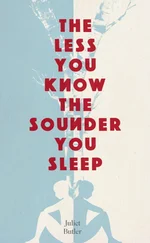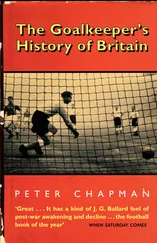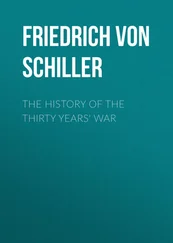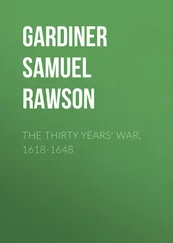Spennymoor Settlement in County Durham was started in 1931 by Bill Farrell, who had studied at Toynbee Hall, the original example of a settlement house founded by Henrietta and Samuel Barnett in Whitechapel in the East End of London in 1884 with support from various Oxford colleges. There the privileged came to live and work among the poor, in the words of Samuel Barnett, ‘To learn as much as to teach: to receive as much as to give.’ Funded by the Pilgrim Trust, Spennymoor was open to all (though initially there was suspicion that Bill Farrell’s title, ‘warden’, meant ‘warder’) and offered classes in such things as carpentry, shoe repairing, elementary psychology and the British Constitution. It instigated a debating society, a male voice choir, a children’s centre, a needlework class for women taught by Farrell’s wife, Betty, and a public lending library, also on her initiative. The Farrells’ interest in art and drama stimulated a sketching club and a play-reading group, with scenery made in the carpentry classes. The centre put on its first play in 1934, largely organised by a group of miners’ wives, a theatre was built which opened in 1939, and soon Spennymoor was dubbed ‘The Pitman’s Academy’ for its prodigious success in helping its members win scholarships to Oxford and adult colleges. Sid Chaplin, a very successful novelist in the 1950s, honed his writing skills at Spennymoor, as did the miner Norman Cornish his artistic talents at the ‘wonderful’ Spennymoor sketching club. The Prince of Wales paid a visit in December 1934.
‘Ashington, pop. 40,000. Mining town mostly built in the early part of this century. Dreary rows a mile long. Ashpits and mines down the middle of the streets,’ was how the 1937 Shell Guide to Northumberland & Durham described this Durham town. Not the sort of place to which to take a scenic detour, but some of those — employed and unemployed — who lived in those ‘dreary rows’ had a yearning for the finer things. There was no public library, but there was a Harmonic Hall, built by the miners so that string bands and brass bands had somewhere to play, as could a children’s orchestra with ‘violins for about eighty kiddies’, and there was a football pitch that doubled as a greyhound track. There was also a thriving branch of the WEA. Harry Wilson, who could have opted to learn music or drama there, instead plumped for ‘Experimental Evolution’, which took the students out into the surrounding area to poke ‘around in ponds and look for flints’. When the course was over, he and some friends felt they were ‘at a dead end again so we started on Art’. Robert Lyon ARCA, Master of Painting and Lecturer in Fine Art at Armstrong College, Newcastle, then part of Durham University, was invited by ‘a number of men … all associated with the pits’, to discuss the possibility of forming an art appreciation group in Ashington. After a lecture by Lyon at which he showed them black-and-white slides of Renaissance paintings and classical Greek sculptures, the twenty-four men and two girls (who didn’t last long, since ‘there’s a strict understanding in mining districts where women fit in and where men fit in’), made it clear that that was not what they wanted: they ‘wanted a way, if possible, of seeing for themselves’. So Lyon agreed (entirely against the spirit of the WEA, which was ‘all theory: nothing which could possibly be interpreted as being of any use for making a living could be taught’) to teach the men how to draw and paint, setting them homework each week to produce a picture on a subject like ‘The Dawn’, ‘Deluge’ or ‘The Hermit’, on cardboard or whatever material they could find.
Lyon took his class to look at watercolours in Newcastle Gallery, and in February 1936, thanks to the generosity of the daughter of the chairman of the P&O shipping line, Helen Sutherland, who lived nearby in Alnwick and was a discerning collector of modernist art, to London to see the Chinese exhibition at the Royal Academy, and visit the Tate and other city sights, ending up with a cream tea and madrigals in the Hampstead home of the owner of Kettle’s Yard Gallery in Cambridge, ‘a celebrated exercise in applied tastefulness’.
In 1936 the Ashington Group held its first exhibition of ninety-seven paintings and several engravings in Newcastle. The ‘experiment’ received favourable notices; soon the art world (the Surrealist painter Julian Trevelyan and the post-impressionist Clive Bell in particular) began to take notice, and the group was mentioned in a Penguin survey of art in England. Inspired by Ashington’s success, other art appreciation groups started to spring up, the British Institute of Adult Education mounted three exploratory ‘Art for the People’ exhibitions, and in April 1937 the Ashington Group contributed some pictures to what the art historian Anthony Blunt called ‘the most important event of the year from the point of view of English Art’, organised by the Artists International Association.
‘Unprofessional Painting’ was the title of an exhibition held at Gateshead in October 1938 to which the Ashington Group sent work. ‘They Paint Their Own Lives’ was another, held in Mansfield, Nottingham, six months later, and indeed the corpus of work did depict ‘ordinary life’: a miner reading a newspaper, a Bedlington terrier — ‘Miners are keen on Bedlingtons,’ explained a critic in The Listener — miners with their pigeons, playing dominoes, having Sunday dinner with their families, poaching. But most were of men at work: down the pits hacking coal, in the pit-head baths, eating their ‘bait’ (packed lunch). In the early days the men sold their pictures for a pound or thirty shillings, ‘to get money for painting materials’, and found themselves regarded as representatives of the British ‘social realist’ school. But ‘mining pictures would not be welcome to hang on the walls at home; landscapes would be considered more suitable. The women had had enough of mining dominating their lives, and frequently, when there were several workers in the house, reducing them to slaves. Many women were never able to get to bed except at weekends and just dozed in a chair to fit in with the different shifts.’
Such voluntary efforts to help the unemployed (and integrate them into the life of the community, since most clubs and classes were open to all, in work or not) might be rightly admired for what they achieved, but there was a suspicion expressed by the trade union movement that occupational centres would produce semi-trained craftsmen who could be used to undercut existing wage rates, and in some areas pressure was put on unemployed union members not to join them. Others regarded the occupational clubs as little more than opium for the masses, handed down by a government that had no policies to end unemployment. Wal Hannington of the NUWM sneered at ‘how craftily the ruling class, by evoking the sentiment of charity, have sought to cover up their sins and omissions in the treatment of the unemployed’, and pointed out that the ‘honoured gentlemen’ of the NCCS had never joined in the demand for the abolition of the Means Test or the restoration of benefit cuts. Frank Forster, an intermittently unemployed casual labourer from Saltney in Cheshire, thought that ‘the idea behind … the BBC broadcasting of morning talks to Unemployed Clubs … seems to be an attempt to keep those who attend the clubs quiet. To dope them … They hand out … what will keep them out of mischief. They must place their existence on a charitable basis, provide them with voluntarily contributed clubs and games etc … All this to prevent them from falling into the hands of Communists.’ George Orwell was of much the same mind, arguing in The Road to Wigan Pier that the centres were ‘simply a device to keep the unemployed quiet and give them an illusion that something is being done for them’, though he conceded that what he considered the ‘rubbish’ the centres offered was probably better for the unemployed man ‘than for years upon end he should do absolutely nothing’ .
Читать дальше












